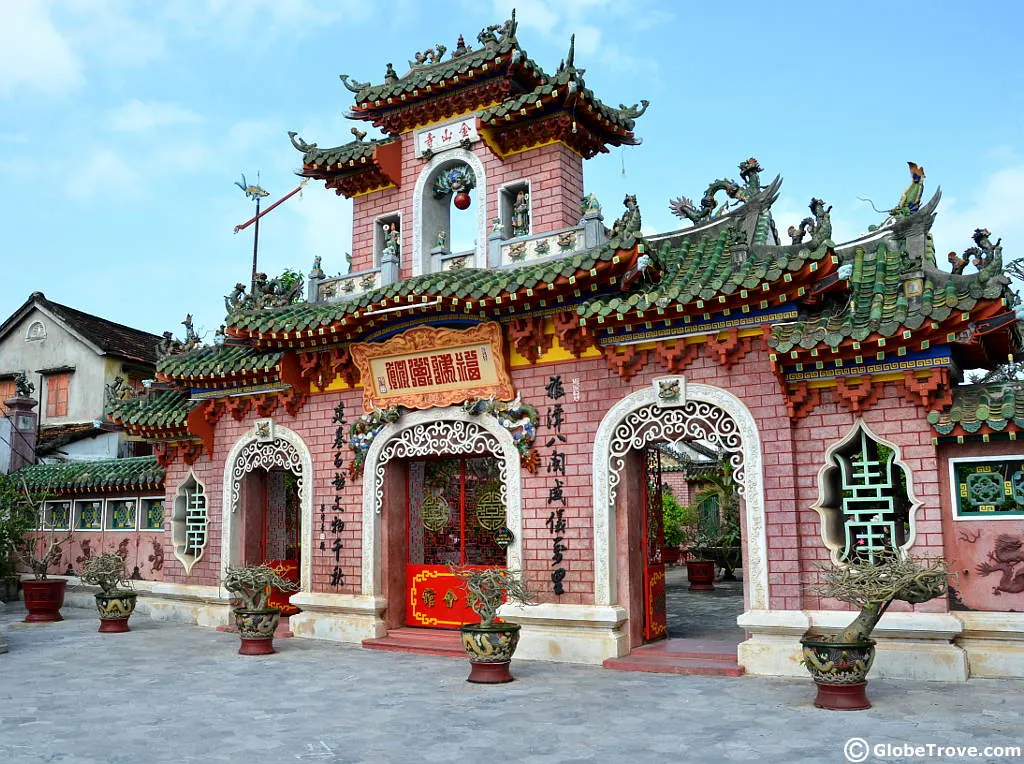There are two popular attractions that draw tourists to Hoi An: The amazing tailors and the beautiful Old Town in Hoi An. To be honest I didn’t travel to Hoi An for the tailors. It was the Ancient Town in Hoi An that attracted me. It also happened to be the place that we spent Christmas in.
I guess that makes me particularly nostalgic when I think back to the time we spent in Hoi An. That being said let me talk about the Ancient town of Hoi An in detail.
We took a flight to Da Nang. Getting from Da Nang to Hoi An is pretty easy. We took a private transfer but there are other easier ways to get from point to point.
This post may contain affiliate links. As an Amazon Associate, I earn a small commission from qualifying purchases at no additional cost to you. Read my disclaimer for further information.
The Ancient Town Of Hoi An
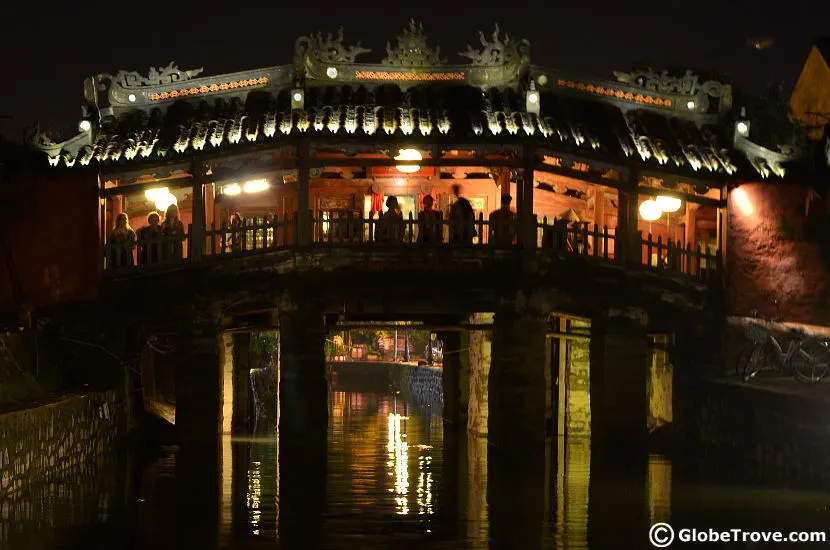
Located in Quang Nam Province in central Vietnam, the Ancient Town in Hoi An lies on the banks of a river called Thu Bon river. The Ancient Town of Hoi An dates back to the 15-19th centuries. The town served as a port for trade to other countries in the 16th and 17th century.
We found that the Ancient Town of Hoi An was relatively well preserved. It was refresher to take a look at some of Vietnam’s history that did not have to do with the Vietnamese war.
Fun Fact: The Ancient Town of Hoi An was inscribed as a heritage site by the UNESCO in 1999. Around 800 buildings in the Ancient Town have been marked to be preserved by the UNESCO.
Visiting The Sights In The Ancient Town Of Hoi An
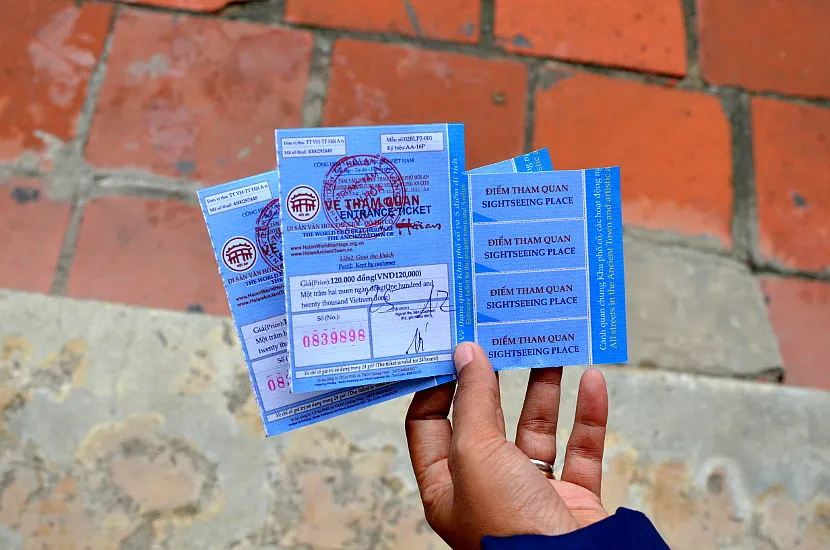
There are 18 buildings in the Ancient Town of Hoi An that have been opened up to the public for viewing. The catch however is that you have to buy a ticket to see them. The cost of the ticket is VND 120,000 which gives you the opportunity to visit 5 buildings within a span of 24 hours.
Getting to these ticket counters is easy enough. They are setup at all the major entrances to the Old town. Visitors are forced to buy the ticket to enter. At first we decided to use the alleyways to move around the check posts and get into the old town of Hoi An. That worked pretty well until we realized that we couldn’t pay an entry pass at each building individually. You have to buy the main pass. That meant that we had to walk back to the check posts to get one.
The validity of the ticket however seemed to be flexible because we showed them our ticket when entering the next day and we were not questioned.
A Brief Overview Of The 18 Noteworthy Buildings
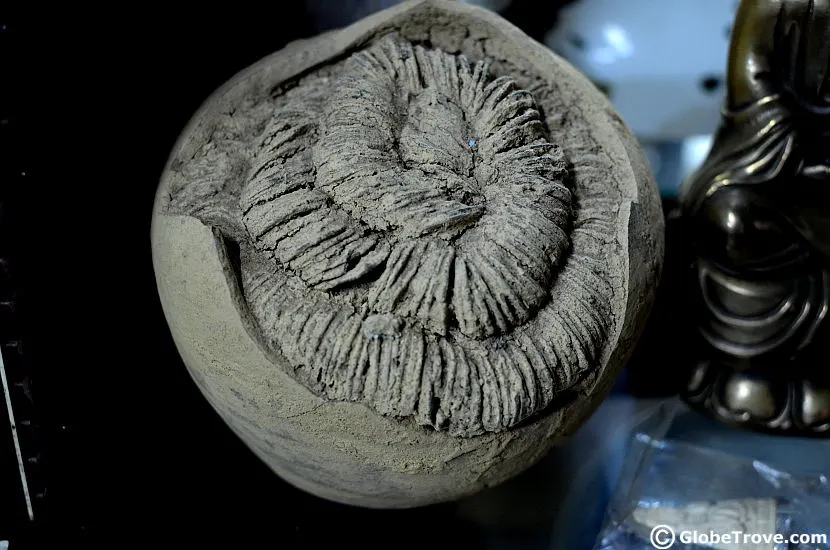
When we were first handed the brochure we were overwhelmed. 18 buildings and we had to choose just 5 out of them. It seemed impossible to make a decision easily. That was until we realized that the buildings were grouped under 4 main groups: Assembly halls, Old houses, Communal houses and Museums.
The pamphlet that is provided with the ticket will give you a general idea of the sites. It also has a map so that you can find each building easily. The Ancient town of Hoi An is small so it is easy to walk around on foot.
I’m just writing down the list of attractions for your reference:
- Japanese Covered Bridge
- Assembly halls: Phuc Kien (1757), Quang Trieu (1885), Trie Chau (1887), Hai Nam (1875)
- Old houses: Tan Ky, Quan Thang, Phung Hung, Duc An, Tran Family Chapel, Nguyen Tuong Family chapel.
- Communal houses: Cam Pho communal house (restored in 1817), Minh Huong communal house (built in 1820), Quan Cong Temple (built in 1653)
- Museums: Museum of Trade Ceramics, Hoi An museum, Museum of Folk culture, Museum of Sa Huynh culture.
Since we had our fill of museums for some time, we decided to wander around and take a look at the old buildings. That was what the Ancient town of Hoi An is famous for after all right?
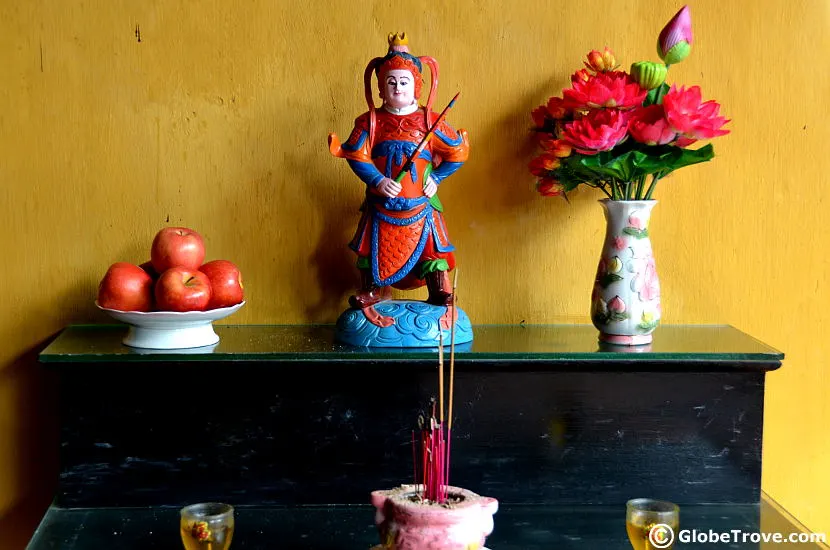
Each of the buildings and temples had their own characteristic architecture. In some of the buildings we were offered a guided tour of the building. It was interesting to note that the old houses were still in use. Despite the damage caused by the flooding of the river and the high cost of repair generation after generation had carefully restored the houses and kept the charm of the Ancient town of Hoi An alive.
The Japanese Covered bridge is probably one of the most popular things to do in Hoi An. It forms a beautiful back drop for photographs both in the day and in the night. We saved one of our tickets to visit the bridge and got lucky when no one asked us for one. So we got to see one extra sight.
An interesting thing to note is that the Ancient town of Hoi An transforms in the night. The main buildings that are opened to the tourists close and the city is lit up with lights and lanterns. The city looks so different that it is hard to believe that you have been in the same place the whole day! I think that was my favorite part about visiting the Ancient town of Hoi An. It was like visiting two different cities on the very same day.

